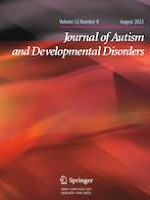Gepubliceerd in:

20-08-2021 | Brief Report
Brief Report: Initial Evidence of Depressive Symptom Disparities among Black and White Transition Age Autistic Youth
Auteurs:
Ed-Dee G. Williams, Matthew J. Smith, Kari Sherwood, Temple S. Lovelace, Lauren Bishop
Gepubliceerd in:
Journal of Autism and Developmental Disorders
|
Uitgave 8/2022
Log in om toegang te krijgen
Excerpt
The lived experience of being autistic and the lived experience of being Black in the United States both put youth at higher risk for developing depressive symptoms. Current research suggests the rate of depression for autistic youth is between two and four times that of non-autistic youth (Pezzimenti et al.,
2019). A recent study examining 1272 autistic youth found that over 20% of the sample between ages 13 and 17 years old reported co-occurring depression (Greenlee et al.,
2016). This rate is more than double the typical rate (8.4%) of depression among non-autistic youth in the same age range (Center for Behavioral Health Statistics & Quality,
2018; Pezzimenti et al.,
2019). Identifying depression among autistic youth is important given its association with increased isolation, long-term substance abuse, self-harm, bullying, and suicide, all of which are already disproportionately higher for autistic youth compared to non-autistic youth (Chen et al.,
2017). Although autistic transition-age youth have disproportionately higher rates of depression compared to their non-autistic peers, we were unable to identify published research that examined the presence of racial disparities in clinical depression or depressive symptoms in this group. …
